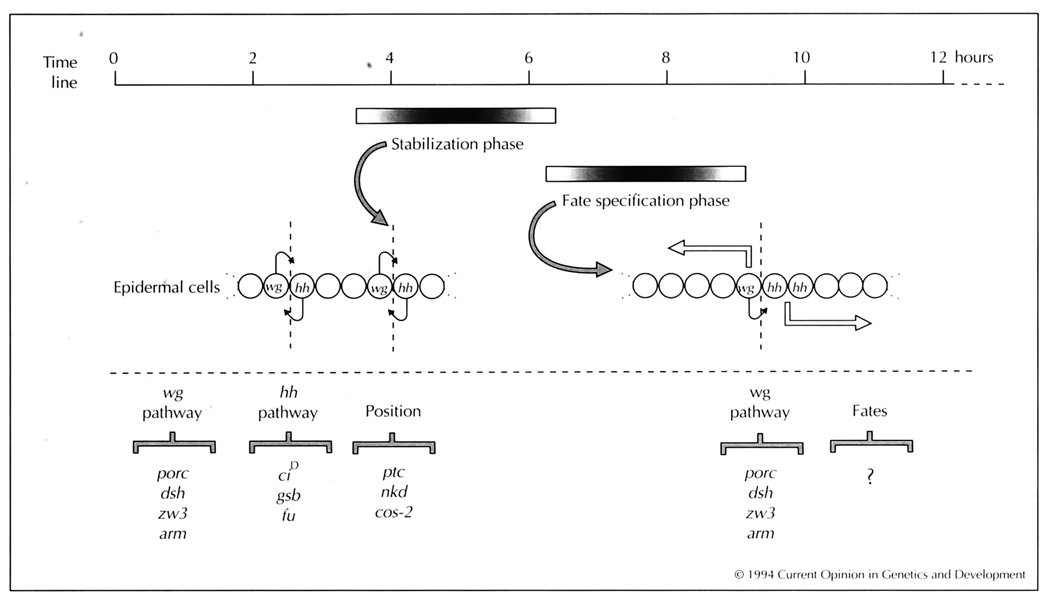Fig. 1.
The stabilization and fate specification phases of epidermal patterning. Cells first form at two hours after fertilization, and the epidermal cells differentiate at twelve hours (time line). Shaded bars indicate the approximate period during which signals stabilize wingless (wg) and hedgehog (hh) expression, or specify cell fates (shading reflects uncertainty in timing). Line of circles represent a short antero-posterior strip of epidermal cells. During the early period, wg- and hh-expressing cells signal to one another (short arrows) across the parasegment boundary (vertical dashed line). During the late period, wg specifies fates anteriorly (leftward open arrow) and the fate of the adjacent hh-expressing cell [which co-expresses engrailed (en)]. hh function specifies cell fates posteriorly (rightward open arrow). The other segment polarity genes are grouped below according to their postulated roles in either the wg or hh signaling pathways, or in restricting the position of the signaling cells. porc—porcupine, dsh—dishevelled, zw3—zeste-white3, arm—armadillo, CiD—cubitus interruptusD, gsb—gooseberry, fu—fused, ptc—patched, nkd—naked, and cos-2—costal-2. The mechanism by which pair-rule segmentation genes first establish wg and en/hh expression is reviewed in [60].

